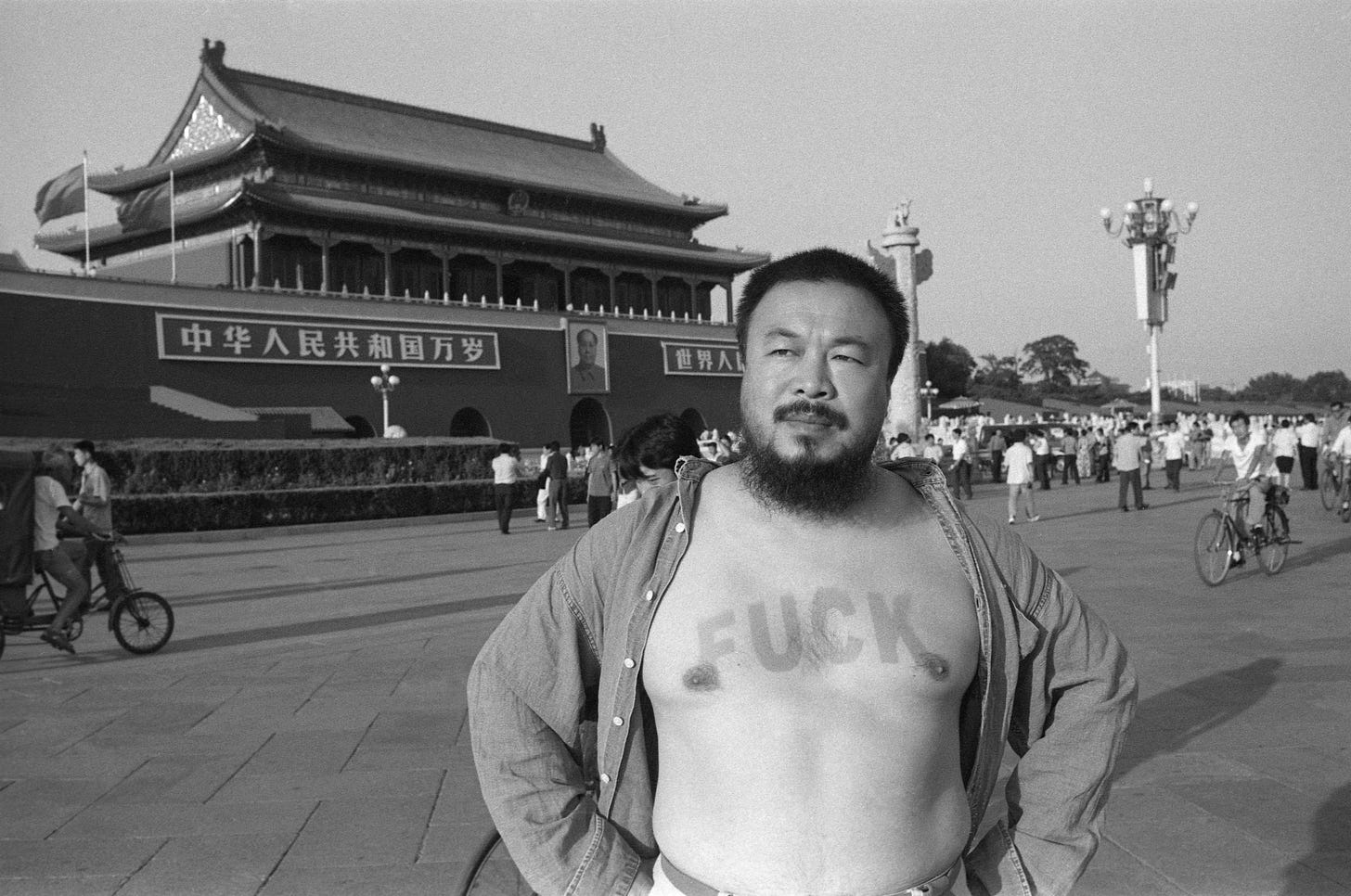I’m not sure how Donald Trump’s second presidential run played into Seattle Art Museum’s decision to mount the largest Ai Weiwei retrospective in the artist’s history, but you can’t think about the opening this month without considering how the current presidential administration wants to decimate support and funding for arts and culture in this country. Oh yeah, and for democracy. I can’t be the only person clinging to every opportunity to celebrate the power of art.
Ai, Rebel, the largest exhibition in SAM history, encompassing all three of the art museum’s locations and more than 12 months of changing installations, offers us a look at varied works created by one of China’s best-known contemporary artists and cultural critics, ranging from a 650,000 piece Lego brick recreation of Edgar Monet’s famed Water Lilies, to a one-ton pile of carefully rendered ceramic sunflower seeds.
We see photographs taken of and by the now 67-year-old artist, son of well-known Chinese poet Ai Qing, as a young man protesting his country’s government, and holding up a mirror to the chaos spawned by the Chinese Communist Party, Mao Tse Tung’s Cultural Revolution and the subsequent rise of the Chinese oligarchy. Ai’s father, despite his renown, was one of many Chinese intellectuals banished to the countryside in the 1950’s for falling short of the Cultural Revolution’s unofficial political purity standards.
Ai had a peripatetic youth, living with his father in exile in rural northwest China before spending many years in Europe and the United States. Although many of Ai’s artworks are aesthetically beautiful, beauty is by no means his creative goal.
Art should be like “a nail in the eye, a spike in the flesh, gravel in the shoe,” according to Ai. Art should provoke us to think, to consider and, above all, to be brave enough to speak truth to power. Sounds to me like a perfect exhibition for our times.
I haven’t seen everything that SAM’s Chinese art curator Foong Ping has installed for this massive show. I confess that I have to schedule another trip to the museum’s main downtown building to spend more time with that installation before I head to the Asian Art Museum in Volunteer Park and then in May to the year-long exhibition that will open that month in SAM’s Olympic Sculpture Park. It feels a little daunting, but Ai, Rebel may be just what I need to focus my political mind in this era. #47 has only just begun what I hope is only a four year term and already I’m looking ahead to the end of his reign of chaos.
I was invited to tour SAM last week on a visit organized for arts community members of many stripes. Curator Ping gave a short talk, and I was reminded that I met with her just before the pandemic shut down virtually every arts organization in the city five years ago. Ping had played an instrumental role in reviving the newly renovated Asian Art Museum in Seattle’s Volunteer Park. I was impressed then and even more impressed now that this monumental retrospective challenges us.
Many visual arts writers will have far more pithy things to say about Ai Weiwei and his work than I do . I don’t view it through an arts writer lens. Half a century ago, well before the era when American college students could easily travel to mainland China, I studied China and Chinese at the University of Michigan, an American center for Asian Studies at that time. Ai was one window through which our professors examined the history and politics of that country, not an artistic voice per se.
Seeing Ai, Rebel now, knowing that Trump and his MAGA posse have gutted the Kennedy Center, are pushing to defund national arts agencies, libraries and public media, and don’t seem to have any affinity for the role of arts and culture in our society, for me prompts direct contemplation of Ai’s personal history and why his role as an artist unafraid to speak truth to power is so important right now.It’s as fascinating to read about Ai as it is to see the Seattle retrospective.
Since the presidential inauguration I’ve been thinking about resilience, my personal need for rest, and the energy somebody like Ai requires to continue doing what he does, living outside his native country and in a state of continual advocacy for the world he wants to manifest. I admire people like him, people who take positive action in support of their beliefs.
In that sense, Ai, Rebel is exhausting to digest, both because there is so much art to take in from a 40-year period, but also because I couldn’t help but compare what I do on a daily basis to Ai’s output. And to recognize how, for at least the next four years, we will be called upon to support our beliefs with our actions. I long to hide under my pillow or cozy flannel heating pad, but the world calls.
Luckily, you have many months to tour this show in all of its manifestations. You need to make a reservation for a timed entry, at the very least a single trip to each of SAM’s sites. Not only is it fascinating, and kind of overwhelming, to see Ai’s own artwork. It’s an exhibition that you can’t really separate from the context in which it’s being shown.
Yes, it’s history on view, but it’s also our current social climate to contemplate. It’s the United States more than 50 years after Richard Nixon, another Republican president, was lauded for opening China to trade, political exchange and conversation with the United States and the West. Given the state of geopolitics in 2025, will we ever again see a world that opens its doors and hearts to one another? Art may be gravel in my shoe, but I have to maintain hope in my heart.






